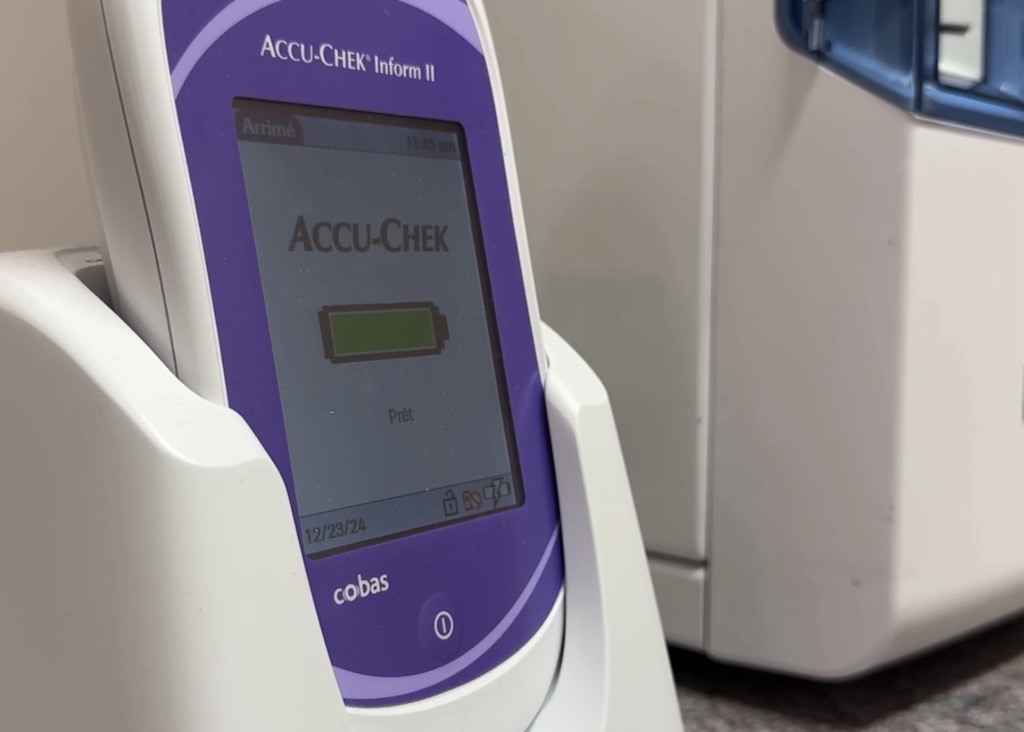Source : CityNews Montreal, 26 décembre 2025, par Johanie Bouffard
Living with type 1 diabetes is already challenging, and for many, the idea of taking part in physical activity and burning through their energy – can be scary.
Combine that with checking their blood sugar levels and managing their insulin injections. Drops in blood sugar can be dangerous — and a drop severe enough could lead to more health risks landing them in the hospital.
This risk is especially high for postmenopausal women, a group that’s been understudies but faces the greatest danger due to significant muscle and bone loss.
The team of Institut de recherches cliniques de Montreal is currently conducting a study to determine how to safely engage in physical activity for this group.
“With type 1 diabetes in aging, there’s a bit of a double whammy. So aging in general, everyone, whether you have diabetes or not, we lose a little bit of muscle mass every decade. We also lose a little bit of bone density and bone strength every decade. This happens faster with type 1 diabetes. And in women with type 1 diabetes, after menopause, it happens even faster. So that puts the mud at a really high risk of frailty, which makes it difficult to live independently, because something as simple as a slip in a fall can lead to hospitalization for weeks on end, depending on what the injury could be,” explained Jane Yardley, the director of physical activity & diabetes laboratory at the Institut de recherches clinique de Montreal (IRCM).

“We know that exercise is really important for people who are living with type 1 diabetes, but we also know that the biggest barrier to exercise is fear of hypoglycemia, fear of going low. So if our current recommendations for insulin adjustments aren’t appropriate for that particular group, we might find that they’re going low more often, or that they’re going high, because the second barrier to exercise is actually loss of agency over diabetes management, so more highs and more lows.”
Current guidelines recommend that individuals with diabetes engage 150 minutes of exercise per week. It includes moderate to vigorous exercise and also two muscle strengthening sessions a week such as weightlifting or resistance training. For those with type 1 diabetes, there are also specific guidelines on adjusting insulin before and during exercise to help prevent hypoglycemia.
“So it is really important that we make sure these guidelines are really fine-tuned, because we are seeing people living longer with type 1 diabetes, living healthfully with type 1 diabetes, and we want to make sure that we give them all the tools to keep doing that, especially with exercise,” said Yardley.

“The problem is that all of the instructions are based on data that were collected in men. So we’re not sure if they’re even appropriate for women, and especially not older women, because those studies, not just men, young fit men. There are the occasional studies that have one or two women, but not very many. There are very, very few studies that are just focused on women. It’s kind of time to really take a close look at these data, now that we can really fine tune insulin before exercise, during exercise.”
Women with type 1 diabetes who are post-menopausal and interested in participating in the study can visit the IRCM website for more information.
“Any movement is good movement, especially when we are over the holidays, tend to take a break and sit down and enjoy a lot of really good food. I think it is really important that we also take the time to enjoy some movement with our families, with our friends, whatever it is that you enjoy, get out there and do it, because it is always going to make you feel better.”
